João Dias
Playing Hex and Counter Wargames using Reinforcement Learning and Recurrent Neural Networks
Feb 19, 2025Abstract:Hex and Counter Wargames are adversarial two-player simulations of real military conflicts requiring complex strategic decision-making. Unlike classical board games, these games feature intricate terrain/unit interactions, unit stacking, large maps of varying sizes, and simultaneous move and combat decisions involving hundreds of units. This paper introduces a novel system designed to address the strategic complexity of Hex and Counter Wargames by integrating cutting-edge advancements in Recurrent Neural Networks with AlphaZero, a reliable modern Reinforcement Learning algorithm. The system utilizes a new Neural Network architecture developed from existing research, incorporating innovative state and action representations tailored to these specific game environments. With minimal training, our solution has shown promising results in typical scenarios, demonstrating the ability to generalize across different terrain and tactical situations. Additionally, we explore the system's potential to scale to larger map sizes. The developed system is openly accessible, facilitating continued research and exploration within this challenging domain.
GAN-Based Content Generation of Maps for Strategy Games
Jan 07, 2023Abstract:Maps are a very important component of strategy games, and a time-consuming task if done by hand. Maps generated by traditional PCG techniques such as Perlin noise or tile-based PCG techniques look unnatural and unappealing, thus not providing the best user experience for the players. However it is possible to have a generator that can create realistic and natural images of maps, given that it is trained how to do so. We propose a model for the generation of maps based on Generative Adversarial Networks (GAN). In our implementation we tested out different variants of GAN-based networks on a dataset of heightmaps. We conducted extensive empirical evaluation to determine the advantages and properties of each approach. The results obtained are promising, showing that it is indeed possible to generate realistic looking maps using this type of approach.
* Published in the Proceedings of GAME ON 2022
Towards Explainable Social Agent Authoring tools: A case study on FAtiMA-Toolkit
Jun 07, 2022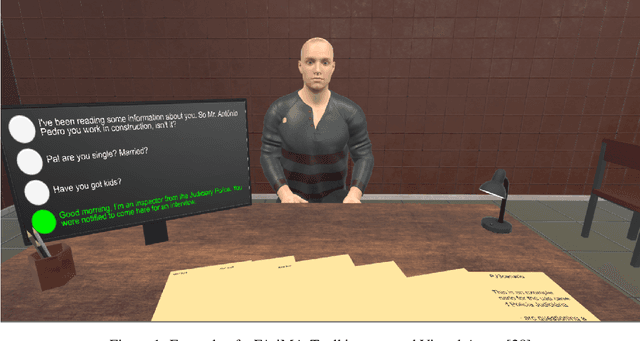

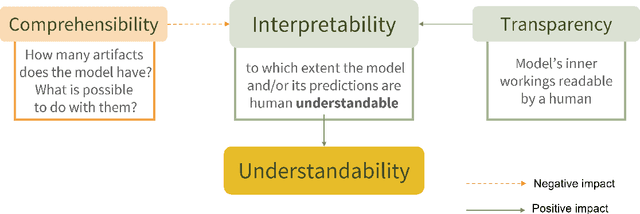

Abstract:The deployment of Socially Intelligent Agents (SIAs) in learning environments has proven to have several advantages in different areas of application. Social Agent Authoring Tools allow scenario designers to create tailored experiences with high control over SIAs behaviour, however, on the flip side, this comes at a cost as the complexity of the scenarios and its authoring can become overbearing. In this paper we introduce the concept of Explainable Social Agent Authoring Tools with the goal of analysing if authoring tools for social agents are understandable and interpretable. To this end we examine whether an authoring tool, FAtiMA-Toolkit, is understandable and its authoring steps interpretable, from the point-of-view of the author. We conducted two user studies to quantitatively assess the Interpretability, Comprehensibility and Transparency of FAtiMA-Toolkit from the perspective of a scenario designer. One of the key findings is the fact that FAtiMA-Toolkit's conceptual model is, in general, understandable, however the emotional-based concepts were not as easily understood and used by the authors. Although there are some positive aspects regarding the explainability of FAtiMA-Toolkit, there is still progress to be made to achieve a fully explainable social agent authoring tool. We provide a set of key concepts and possible solutions that can guide developers to build such tools.
Semantic Norm Recognition and its application to Portuguese Law
Mar 10, 2022



Abstract:Being able to clearly interpret legal texts and fully understanding our rights, obligations and other legal norms has become progressively more important in the digital society. However, simply giving citizens access to the laws is not enough, as there is a need to provide meaningful information that cater to their specific queries and needs. For this, it is necessary to extract the relevant semantic information present in legal texts. Thus, we introduce the SNR (Semantic Norm Recognition) system, an automatic semantic information extraction system trained on a domain-specific (legal) text corpus taken from Portuguese Consumer Law. The SNR system uses the Portuguese Bert (BERTimbau) and was trained on a legislative Portuguese corpus. We demonstrate how our system achieved good results (81.44\% F1-score) on this domain-specific corpus, despite existing noise, and how it can be used to improve downstream tasks such as information retrieval.
FAtiMA Toolkit -- Toward an effective and accessible tool for the development of intelligent virtual agents and social robots
Mar 04, 2021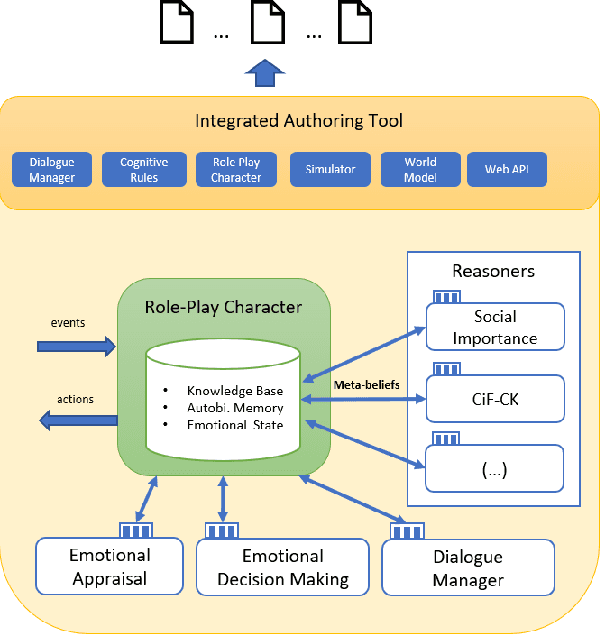
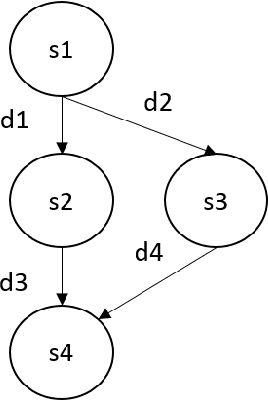
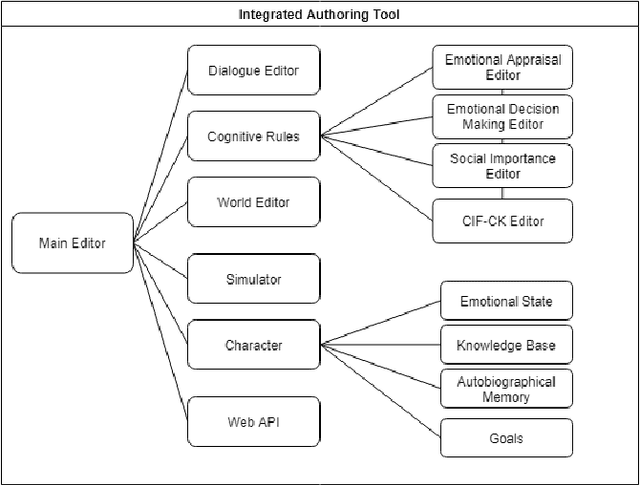
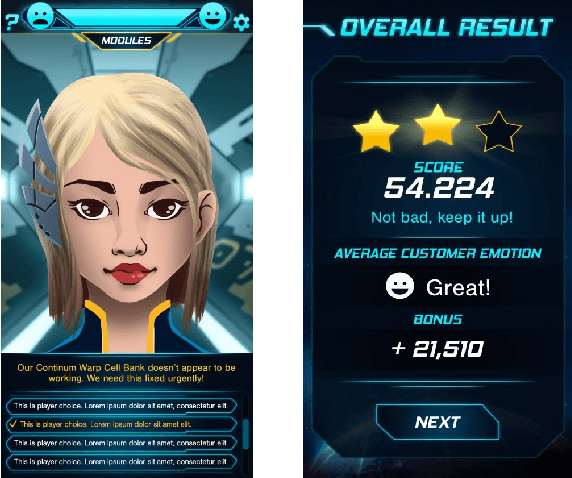
Abstract:More than a decade has passed since the development of FearNot!, an application designed to help children deal with bullying through role-playing with virtual characters. It was also the application that led to the creation of FAtiMA, an affective agent architecture for creating autonomous characters that can evoke empathic responses. In this paper, we describe FAtiMA Toolkit, a collection of open-source tools that is designed to help researchers, game developers and roboticists incorporate a computational model of emotion and decision-making in their work. The toolkit was developed with the goal of making FAtiMA more accessible, easier to incorporate into different projects and more flexible in its capabilities for human-agent interaction, based upon the experience gathered over the years across different virtual environments and human-robot interaction scenarios. As a result, this work makes several different contributions to the field of Agent-Based Architectures. More precisely, FAtiMA Toolkit's library based design allows developers to easily integrate it with other frameworks, its meta-cognitive model affords different internal reasoners and affective components and its explicit dialogue structure gives control to the author even within highly complex scenarios. To demonstrate the use of FAtiMA Toolkit, several different use cases where the toolkit was successfully applied are described and discussed.
CHARET: Character-centered Approach to Emotion Tracking in Stories
Feb 15, 2021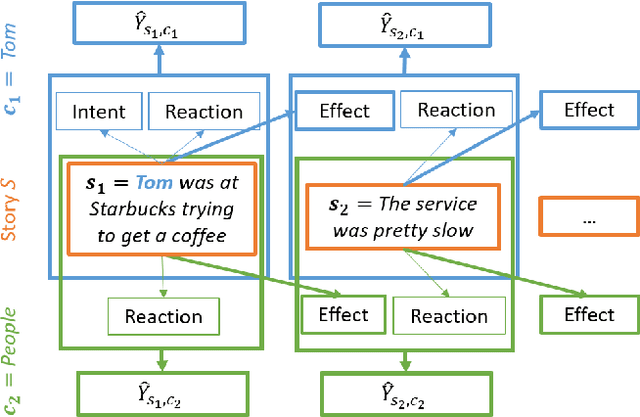
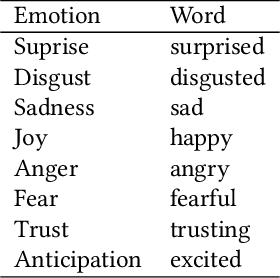
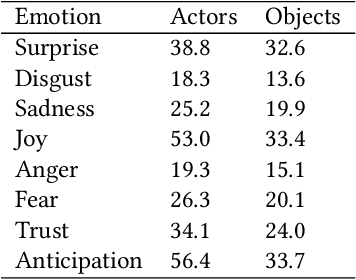
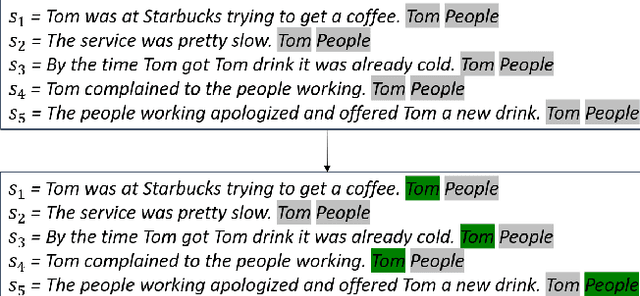
Abstract:Autonomous agents that can engage in social interactions witha human is the ultimate goal of a myriad of applications. A keychallenge in the design of these applications is to define the socialbehavior of the agent, which requires extensive content creation.In this research, we explore how we can leverage current state-of-the-art tools to make inferences about the emotional state ofa character in a story as events unfold, in a coherent way. Wepropose a character role-labelling approach to emotion tracking thataccounts for the semantics of emotions. We show that by identifyingactors and objects of events and considering the emotional stateof the characters, we can achieve better performance in this task,when compared to end-to-end approaches.
Multi-task Learning and Catastrophic Forgetting in Continual Reinforcement Learning
Sep 22, 2019



Abstract:In this paper we investigate two hypothesis regarding the use of deep reinforcement learning in multiple tasks. The first hypothesis is driven by the question of whether a deep reinforcement learning algorithm, trained on two similar tasks, is able to outperform two single-task, individually trained algorithms, by more efficiently learning a new, similar task, that none of the three algorithms has encountered before. The second hypothesis is driven by the question of whether the same multi-task deep RL algorithm, trained on two similar tasks and augmented with elastic weight consolidation (EWC), is able to retain similar performance on the new task, as a similar algorithm without EWC, whilst being able to overcome catastrophic forgetting in the two previous tasks. We show that a multi-task Asynchronous Advantage Actor-Critic (GA3C) algorithm, trained on Space Invaders and Demon Attack, is in fact able to outperform two single-tasks GA3C versions, trained individually for each single-task, when evaluated on a new, third task, namely, Phoenix. We also show that, when training two trained multi-task GA3C algorithms on the third task, if one is augmented with EWC, it is not only able to achieve similar performance on the new task, but also capable of overcoming a substantial amount of catastrophic forgetting on the two previous tasks.
 Add to Chrome
Add to Chrome Add to Firefox
Add to Firefox Add to Edge
Add to Edge